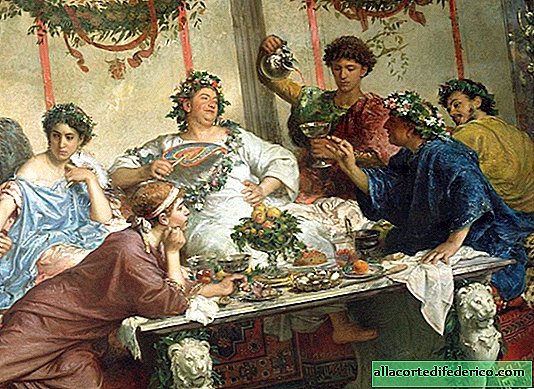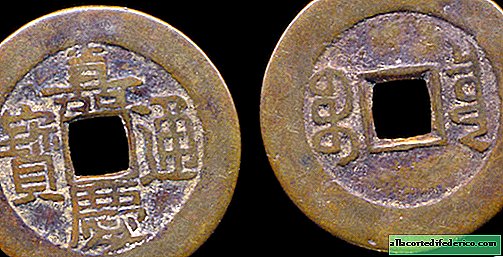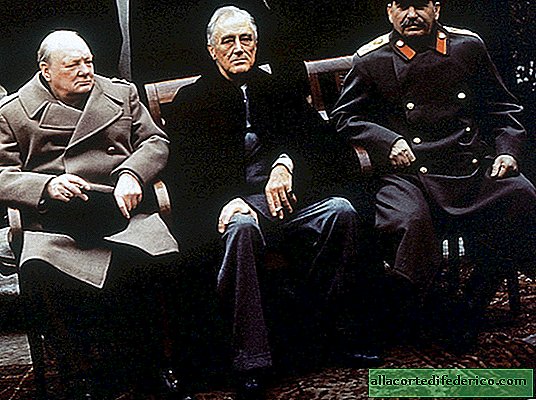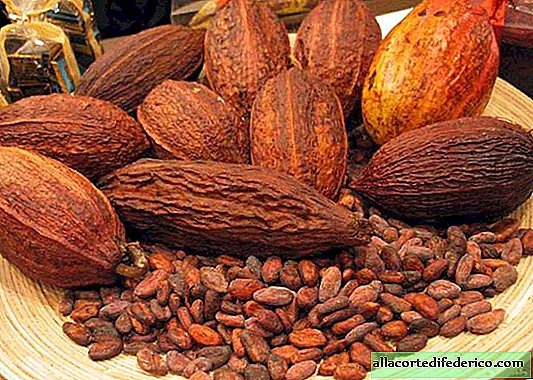Death from food: how luxurious Roman feasts went
The Roman feast was an unusual place of gastronomic excess, which served dishes from the peacock tongue and fried sleepyheads, pheasant brains in marinade and flamingo tongues in spicy sauce. All this was eaten under liters of wine. Glasses were constantly filled with "waiters." At the heart of this gluttony was a cold calculation.
For the aristocrats who ruled this vast ancient empire, at the peak of their development under the leadership of the warrior-emperor Trajan (from 98 to 117 AD), stretching from Britain to Baghdad, feasts were something much more than just a sumptuous meal. Feasts were the most important means of political control.
"The feast made it possible to implement the main rule: keep your friends close, and your enemies even closer."says Barry Strauss, historian and professor at Cornell University. His fascinating book, Ten Caesars: Roman Emperors from Augustus to Constantine, tells of 10 prominent emperors whose policies and personalities shaped the fate of Ancient Rome. "Feasts allowed emperors to demonstrate their power and wealth, as well as show their patronage to guests and control potential competitors. Even before the emperors appeared, members of the Roman elite held private banquets as a way to brag, mingle, reward friends and part with enemies.".
Not just pay, but get rid of them by adding a little poison to the wine. There was always a suspicion of poisoning when a representative of the Roman aristocracy suddenly died after a feast.
 Painting "Roman Feast". Artist Roberto Bompiani. 1875
Painting "Roman Feast". Artist Roberto Bompiani. 1875For example, the son of the emperor Claudius became ill at the court feast and after a while he died. The authorities explained everything with natural reasons, but no one believed it. Everyone continued to believe that he was poisoned by order of Emperor Nero.
Poet Juvenal in his cynical formula "Bread and circuses!" expressed the essence of Roman society. This strategy worked not only for the crowd of commoners, but also for the upper classes.
In the case of the aristocracy, "bread" belonged to a dazzling range of delicacies that they overeat with a breathtaking lack of moderation. At their hedonistic feasts, the Romans ate to such an extent that they became ill.
Feasts in ancient Rome lasted several hours. Their device required a huge staff of chefs, celebration organizers, bakers, confectioners, special slaves who brought water bowls for washing their hands. Servants served on huge plates of stuffed ostrich from Africa, pepper and sugarcane from India, sumy from Syria, caraway seeds from Ethiopia, olives from Greece. The wine was drunk in large quantities from silver goblets with two handles. In the background a lyre was playing. At feasts were artists, poets, trainers of leopards.
 Painting "Roses Heliogabal". Painter Lawrence Alma-Tadema. 1888
Painting "Roses Heliogabal". Painter Lawrence Alma-Tadema. 1888The artist Laurence Alma-Tadema in the painting "Heliogabal Roses" depicted one of these feasts. The emperor invited all his enemies and ordered to scatter so many roses from the ceiling so that his guests suffocated from the scent. It was impossible to leave the imperial banquet. This was regarded as disrespect for state power and was punishable by painful death. The emperor himself and his mother are depicted in the background of the picture.
Roman gastronomy was raised to the level of high art, and its apogee was a magnificent Roman feast.
The great Roman gourmet Mark Gabius Apicius, who compiled the only surviving culinary book of the Roman Empire De Re Coquinaria ("The Art of Culinary "), lists more than 400 recipes from camel humps, parrots, venison, pheasant, rabbit, goose liver, brain-stuffed sausages, peacock, flamingos, cranes, ostriches, ham, seafood from sea urchins to red mullet, red mullet, perch, mackerel and oysters.
 Banquet of the noble Roman
Banquet of the noble RomanBut before this happened, he received the sons of the emperor Tiberius and served them nightingales, baked in honey, stuffed with prunes, in a sauce of aromatic herbs and grape juice, with a garnish of rose petals. This luxurious dish made a splash in Rome.
We enjoy the culinary inventions of Apitsia to this day. We should be grateful to him for the recipes for cooking ham and bacon. Not all emperors were such depraved as Nero or Heliogabal. Julius Caesar, as you know, adhered to a simple diet and did not abuse alcohol. Marcus Aurelius, Octavian Augustus were moderate in eating and drinking. Emperor Trajan, although he was known for his addiction to wine and boys, still could stop during his time and not lose his mind. Trajan's successor, the intelligent Adrian, admired his surroundings with modesty and simplicity. But there were few such rulers.
Some historians suggest that legends of revelry may be exaggerated.
 "A feast under the ionic portico." Artist Giovanni Paolo Panini (1691-1705)
"A feast under the ionic portico." Artist Giovanni Paolo Panini (1691-1705)There were rumors about Emperor Heliogabal that he was swimming in the smelling saffron pool, mixing handfuls of rice with pearls for his guests and forcing him to cook dishes of a certain color - green or blue. Everything depended on imagination. If he needed a blue dinner, then the fish was cooked in a bluish sauce that imitated the color of the sea.
One of the creepiest stories is perfect for a Halloween party. This is the so-called "Black Feast", arranged by the emperor Domitian, known for his cruelty. He covered the hall in black, painted all the food in black and put each guest who arrived next to the tombstone on which he wrote his name. The guests thought that they would not leave this party alive, especially since Domitian talked about their murder throughout the dinner. It later turned out to be a joke.
Outside patrician mansions and saffron-scented pools, ordinary Roman citizens lived in crowded houses and ate modestly. In the empire, hunger and hedonism coexisted simultaneously. Ordinary Romans ate bread, cereal, fruits and vegetables, dates, honey and cheese. Occasionally, meat and fish.

It was difficult to feed a city with a population of a million people. Historians mention 19 food riots. During one of them, which occurred in 51 AD and was caused by drought, Emperor Claudius had to seriously worry about his life. A crowd threw bread crusts over him.
The main suppliers of grain for Rome were North Africa and Egypt. When in the fifth century AD barbarians conquered these strategically important areas for Ancient Rome, the production and supply of food ceased. A fatal blow was inflicted on an empire weakened by years of internal disintegration and struggle.

















